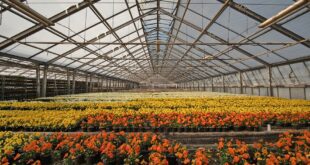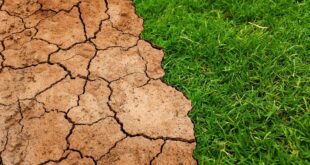30 Ways You Can Combat Climate Change Today
1. Choose to Walk, Bike or Use Public Transportation
Using a sustainable mode of transportation can help reduce your carbon footprint. Instead of the car, try walking, biking or taking the bus to work, school or just to travel in town.
2. Regularly Check Your Vehicle’s Tire Pressure
Properly inflated tires not only save fuel, but reduce your carbon footprint as less gas is utilized.
3. Use Organic Produce
Using organic produce eliminates handling of pesticides which can lead to fewer hazardous air emissions that may cause air pollution.
4. Plant Trees
Green growth offers cleaner air and more oxygen thereby sequestering carbon emissions.
5. Switch to LED Bulbs
LED bulbs consume less power than incandescent light bulbs; their use reduces carbon emission patterns and thus reduces environmental pollution.
6. Install Solar Panels
If possible, utilize alternative sources of energy to power your home or business like solar panels, reducing reliance on non-sustainable energy sources.
7. Invest in Energy-Efficient Appliances
Energy-efficient appliances cut down on environmental devastation and may prove economizing on electricity consumption as well.
8. Carry Your Bags
Go out everywhere with your own bags and say no to single-use plastic bags. Carry your own cloth, jute/mesh bags for shopping and other daily groceries.
9. Properly Dispose of Hazardous Waste
Dispose of hazardous electronic appliances in environmentally conscious ways. Utilize hazardous waste collection stations created for this specific purpose to reduce their impact on the environment.
10. Encourage Wildlife Innovation
Create and maintain gardens which can support a minimized footprint by providing sustainable refuges and allowing us to actively become advocates in preserving species.
11. Reduce Idling Time
Avoid idling time in parked vehicles which leads to unnecessary carbon emissions.
12. Eat More Sustainable Foods
Reduce carbon footprint substantially by switching to plant-based diets. Prioritize choosing products from organic, cage-free or grass-raised companies that avoid fortifying harmful pesticide or fertilizer usage.
13. Reduce Water Usage
Sustainable water management leads toward good environmental stewardship. Turn off running water taps while brushing teeth, and fixing leakages allows us to conserve water resources.
14. Reduce Paper Waste
The reduction of paper waste reduces the burden on our natural forests. Suppose you must have papers, choose or opt for recycled paper options.
15. Recycle Regularly
Play your part to generate less landfill trash by recycling grass and vegetable clippings along with equipment like washing machines and televisions which need to be responsibly converted or handled for further growth.
16. Use Reusable Food Containers
Choosing environmental-friendly storage containers and food wraps and reducing its disposability keeps non-decomposable plastic wastes to a lesser degree, thereby mitigating environmental pollution.
17. Invest in Renewable Energy
Relying on alternative and more sustainable forms of energy would encourage decreased greenhouse gas emissions from prevalent non-sustainable energy currently strongly in use.
18. Go Paperless
Cut down or use digital printers and e-infrastructure in lieu of physical copies keeps our work safe while minimizing paper costs through reducing the impact of carbon on environmental stability.
19. Unplug Appliances When Not in Use
Turning off all electrical equipment when not being used changeover to lower-cost performance saves significant amounts of electricity costs.
20. Seal Your Home
A home can selectively remain protected from external moderate temperature through the proper insulation that promotes sustainable conditioning.
21. Possess Efficient Home Heaters
The installation of an energy-efficient heater consumes less overall energy, and keeps the temperature well conditioned, marking one’s concerns for the environment by reducing CO\2 emissions.
22. Compost Rather than Discarding
A valuable means of waste recycling reduces producing methane, and easily becomes useful plant fertilizers, thereby promoting nutrient reuse, deters garbage reducing pollution and benefits as ground cover or feed for positive operations.
23. Prepare & Reheat With Electric Cookware
Switching from gas appliances to electric cooking implements reduces CO\2 emissions and leads to more focus on sustainable and environmentally smart practices.
24. Start Implementing Smart Home Technology
Simplify controlling energy sources through careful installation promoting energy conservation which saves electricity consumption by automatically controlling timing without impinging said rights.
25. Going Toxic-Free
Keeping ways of a non-toxic home cuts down the environmental damage on non-sustainable and non-biodegradable waste ending up inside landfills magnified over longer periods of time.
26. Upcycle Rather Than Buy New
Based on environmental practices, upcycling follows the motto “one person’s garbage is another person’s treasure.” This philosophy leads inevitably weeding out pollution by encouraging one who would like to use and tailor blemished items in functional and environmental-friendly ways, subverting future burdens of waste material.
27. Eat Organic & Local Foods
Try getting organic and fresh pickings related to your area or your people from proficient sources directly, linked with best environmental techniques through local agriculture movements.
28. Invest in a Personal Air Quality Monitor
A Personal Air Quality Monitor allows to selectively discern individualized areas of environmental pollution or undermines of well-being, ensuring access to particular components of clean eco-air opportunities alongside remaining a vigorous steward of the environment.
29. Wear Eco-Clothing
Sustain organic solidarity through upbeat and environmentally judgmental clothing items featuring natural, recycled components, or environmentally-friendly clothing
30. Support Biodiverse Eco-Layouts
Promote and contribute funds by backing environmentally thought-out projects, landscaping venues and green spaces seen on non-negative supplies promoting biodiversity within unique locales.
 Mind Uncharted Explore. Discover. Learn.
Mind Uncharted Explore. Discover. Learn.




